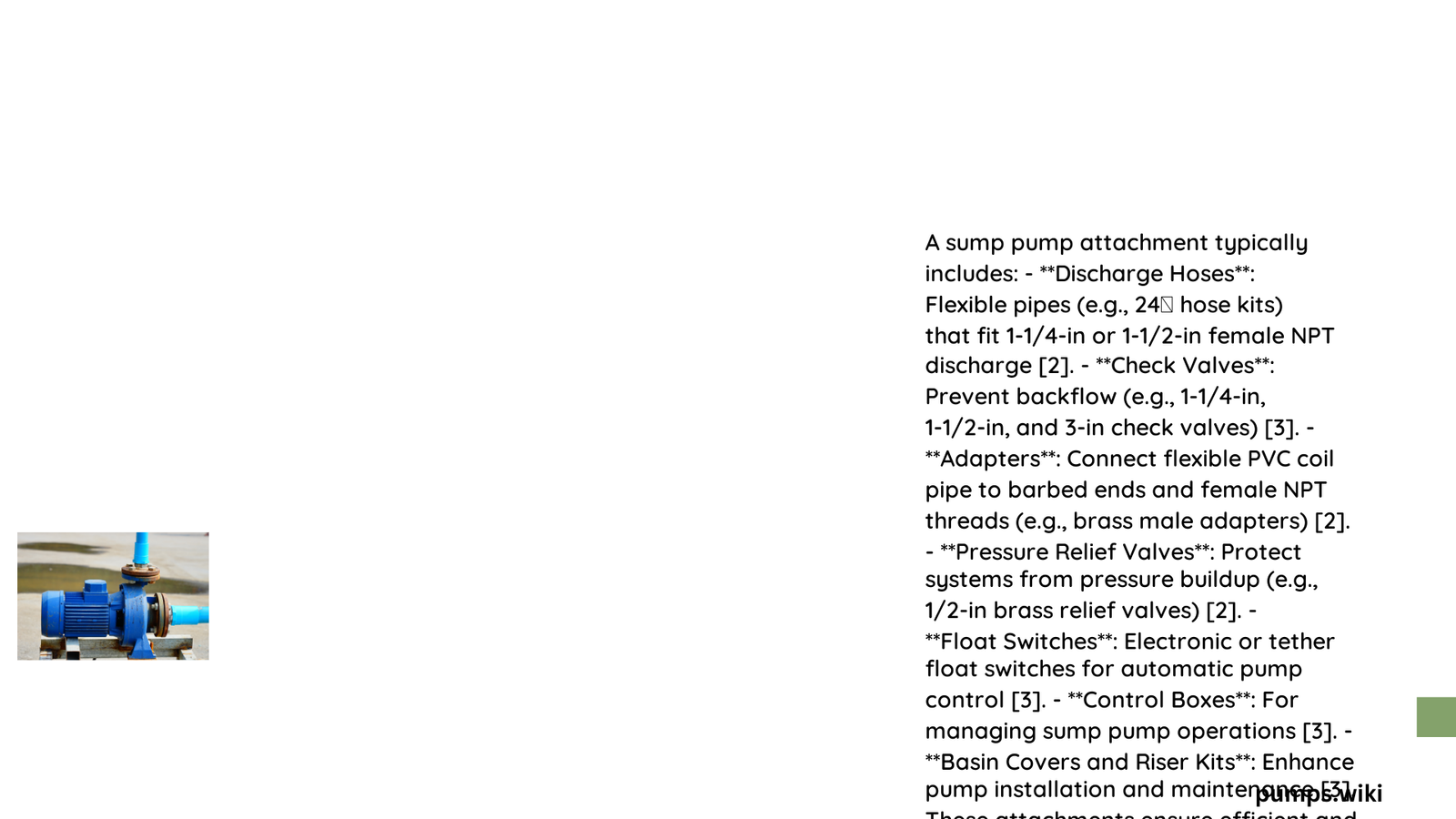Sump pump attachments are critical components in preventing basement flooding and managing groundwater intrusion. These specialized devices provide homeowners with a robust defense against water damage by efficiently removing excess water from sump pits. Understanding their features, installation methods, and performance characteristics is essential for effective water management and protecting your property’s structural integrity.
What Are the Key Material Specifications for Sump Pump Attachments?
Sump pump attachments come in various materials, each offering unique advantages:
Thermoplastic Construction
- Advantages:
- Lightweight
- Corrosion-resistant
- Cost-effective
- Suitable for less demanding environments
Cast Iron Construction
- Advantages:
- Superior durability
- Enhanced strength
- Longer warranty periods
- Better performance in challenging conditions
| Material Type | Durability | Corrosion Resistance | Cost | Recommended Use |
|---|---|---|---|---|
| Thermoplastic | Moderate | High | Low | Residential, mild conditions |
| Cast Iron | High | Moderate | High | Commercial, heavy-duty applications |
How Do Performance Specifications Impact Sump Pump Attachment Effectiveness?

Performance specifications are crucial in determining a sump pump’s efficiency:
Flow Rate Considerations
- Typical residential pumps range from 30-50 gallons per minute
- Factors influencing flow rate:
- Pump motor power
- Discharge pipe diameter
- Vertical lift height
- Water table conditions
Switch Types and Mechanisms
- Vertical Float Switches:
- Precise water level detection
- Compact design
-
Suitable for smaller sump pits
-
Tethered Float Switches:
- Wider water level range
- More flexible positioning
- Ideal for larger sump basins
What Are the Critical Steps for Proper Sump Pump Attachment Installation?
Preparation Phase
- Measure Sump Pit Dimensions
- Verify pump compatibility
- Ensure proper fit
-
Check electrical requirements
-
Gather Necessary Tools
- Adjustable wrench
- Level
- Electrical tape
- Pipe sealant
- Drill (optional)
Installation Procedure
- Position pump centrally in sump pit
- Connect discharge pipe securely
- Align float switch mechanism
- Test pump functionality
- Verify water drainage pattern
What Maintenance Practices Enhance Sump Pump Attachment Longevity?
Routine Maintenance Checklist
- Inspect float switch quarterly
- Clean sump pit annually
- Test pump operation every six months
- Check electrical connections
- Lubricate moving parts as recommended
Potential Challenges
- Sediment accumulation
- Mechanical wear
- Electrical connection degradation
- Potential freezing in cold climates
What Factors Influence Sump Pump Attachment Cost?
Price Range Breakdown
- Entry-Level Pumps: $100 – $250
- Mid-Range Pumps: $250 – $500
- Professional-Grade Pumps: $500 – $1,000
Cost Considerations
- Material quality
- Motor power
- Brand reputation
- Additional features
- Warranty coverage
Conclusion
Selecting and maintaining the right sump pump attachment requires careful consideration of material, performance, and installation techniques. By understanding these critical factors, homeowners can effectively protect their properties from water damage and ensure long-term reliability.
